RISE & FALL OF THE STUYVESANT CLOWN (1895)
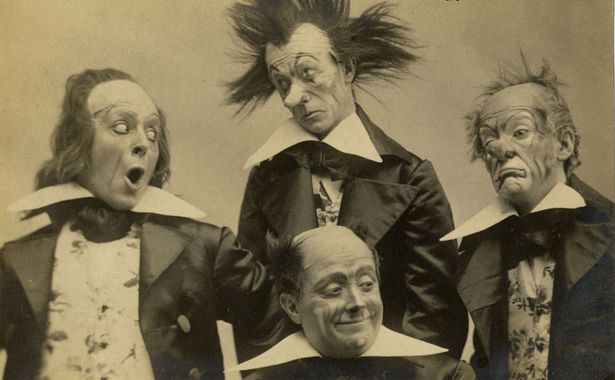
Brownstone Detectives investigates the history of our clients’ homes.
The story you are about to read was composed from research conducted in the course of one of those investigations.
Do you know the history of YOUR house?
*******************************************************************************************************************************
Back in the early 1890s, in Stuyvesant Heights, there were clowns everywhere. Roaming and squeezing their little horns, making sad, droopy faces, and generally miming mischief.
And everyone came to see them at Halsey Street and Saratoga where they paid a nickel a person to get in.
Life for the clowns existed there for at least 20 years, until one day it all came to a halt. The developers had arrived and were threatening the home of the clown, threatening his very existence.
BROOKLYN EXPANDS TO BUSHWICK
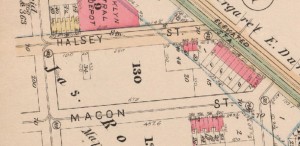
By the mid-1890s, three blocks in the furthest reaches of the Eastern District’s Stuyvesant Heights had surprisingly remained untouched by speculative progress.
While feverish land purchasing and selling had gone on all around this valuable real estate for the previous ten or so years, these dusty plots of land would continue to sit like the vestiges of the past that they were – unused farm land.
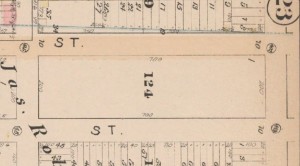
Eventually, though, this land would be put to use by a bunch of clowns – the lots would begin, in 1891, to be referred to as the “circus grounds,” as traveling circuses and shows would begin annually to rent the land for their high profile extravaganzas.
But the reign of the Stuyvesant Clown would be relatively short as, in 1896, he would lose his first (of three) plot of land to a park.
3 PLOTS FOR 3 RINGS
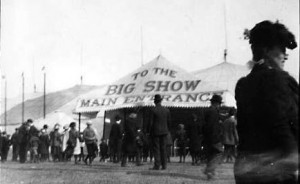
entrance,” at Broadway and Halsey Street – 1902 (courtesy of the
Brooklyn Public Library).
These three increasingly valuable plots of land were composed of 1) the block where Saratoga Park stands today (124), 2) the block directly east of Saratoga Park (130) – which, after the creation of Saratoga Park, would default to becoming Saratoga Fields, home to Brooklyn semi-professional baseball and other athletic events – and 3) the block directly south of that one (131), which would someday sprout a garage on the corner and a line of apartment buildings and rowhouses.
For 20 years or more, every wild west show and circus that visited Brooklyn put up its tents on these tracts of land and every person in Brooklyn at one time or another became entertained by the nomads.
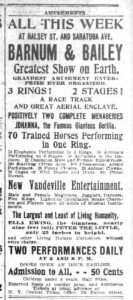
Amongst these companies was the Forepaugh Wild West Show and the Barnum & Bailey “Greatest Show on Earth,” which both set up their big “exhibitions” tent on the block that would become Saratoga Square. Both shows set up their circus/show messes for circus and show people – and their animal tents – to the bock east of it on Saratoga Field.
Approximately 15,000 people attended the first Barnum show at the park, on 27 April 1891, and were treated to a performance “more interesting this year than it has been for some years past.”
And every year afterwards, until 1896, Brooklynites came from miles around to witness the jubilant spirit and the aura of a festive holiday for the two weeks that the shows usually kept their tents up.
But change was in the air, and around the mid-1890s it was evident that these plots of land were soon to take part in the change that was taking place all around them. And when the block that would become Saratoga Park was sold for that use, that plot of land was removed from the chess board never to be utilized for the circus again.
And so the Stuyvesant Clown found himself about to be evicted – squeezed, like his fellow contortionist, into an ever smaller real estate box.
———————————————————————————————————————–
 Brownstone Detectives is an historic property research agency. Our mission is to document and save the histories of our clients’ homes. From our research, we produce our celebrated House History Books and House History Reports. Contact us today to begin discovering the history of your home.
Brownstone Detectives is an historic property research agency. Our mission is to document and save the histories of our clients’ homes. From our research, we produce our celebrated House History Books and House History Reports. Contact us today to begin discovering the history of your home.